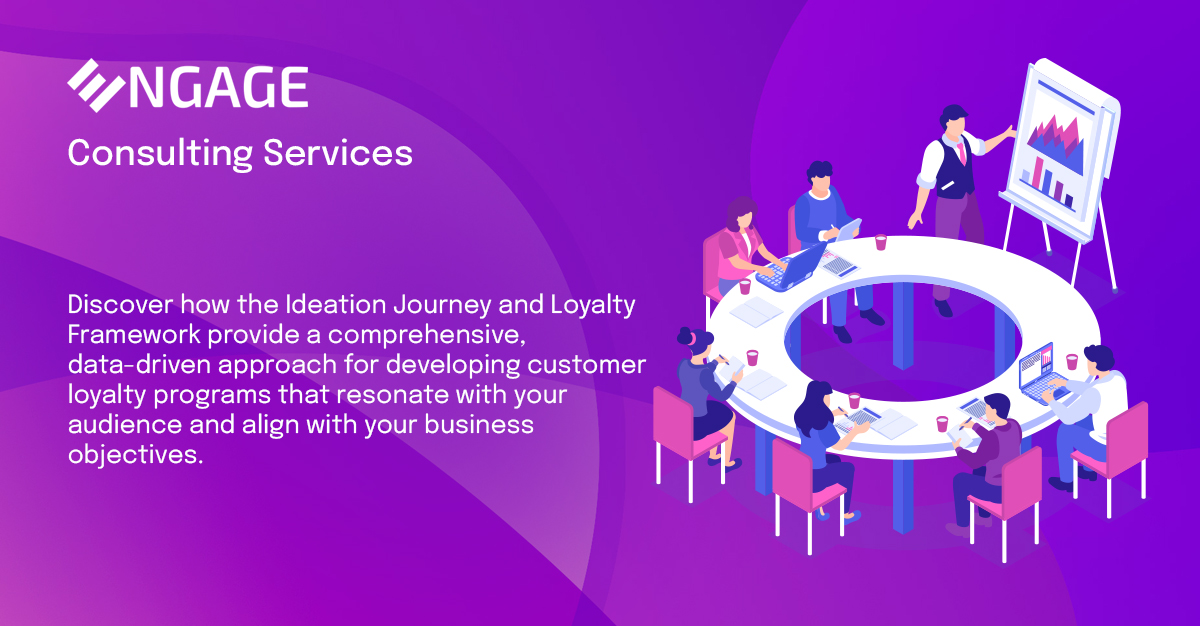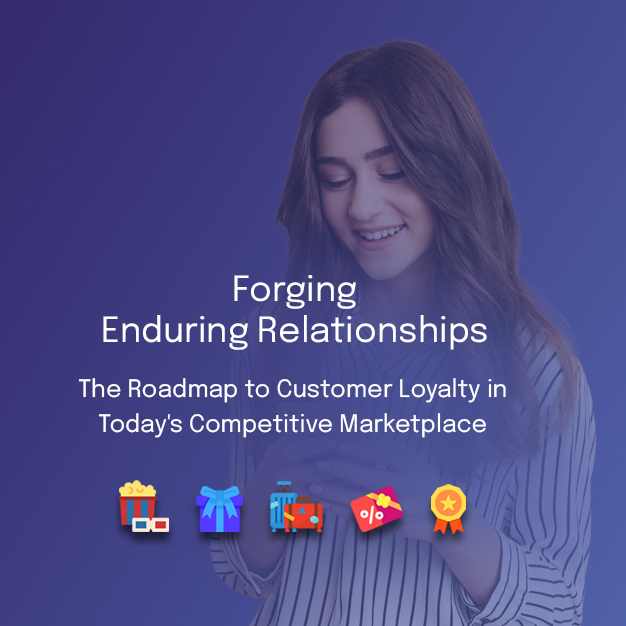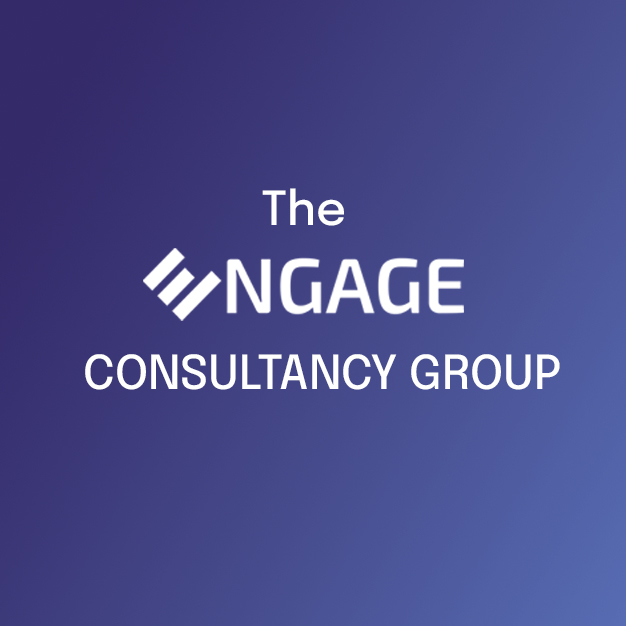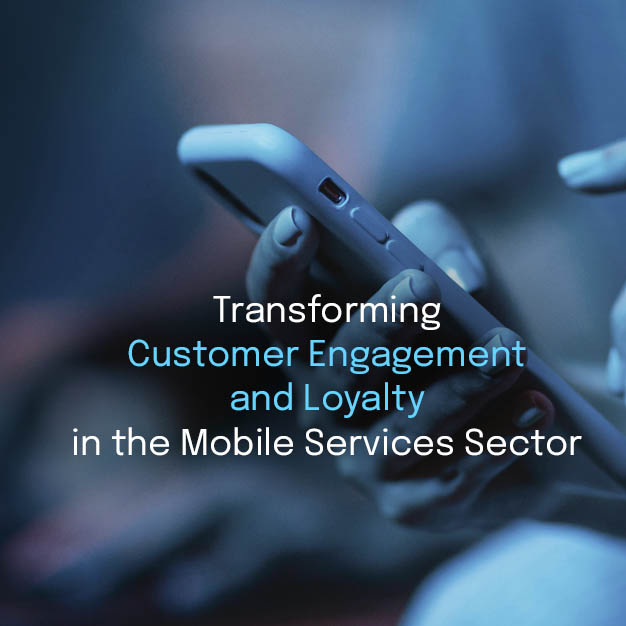In an increasingly competitive business landscape, the effectiveness of long-unchanged customer loyalty programs with traditional mechanics dissipates over time. When too many enterprises in a market are offering commonplace rewards based on spending events only, consumers lose interest and reduce their participation.
Successful loyalty programs with high engagement rates continuously adapt and stay ahead of the game by frequently introducing new engaging layers, which have been influenced by customer sentiment, feedback, behaviors, and expectations. Achieving this requires a comprehensive, systematic, and data-informed approach—embodied in the process of Loyalty Ideation— ensuring that your program is uniquely positioned in your market.
Designed to create new concepts to enhance existing loyalty programs, the Engage Loyalty Ideation Process aligns your corporate objectives with your customer needs, stimulating heightened customer engagement and bolstering sustainable growth. The essence of the Ideation process is to equip organizations with the necessary insights, designs, measurement frameworks, and business cases to gain marketing, technical and strategic alignment on unique and customized loyalty program concepts that resonate with their brand. Central to this approach is understanding consumer behavior, leveraging market trends, and creating compelling value propositions that drive customer loyalty and advocacy.
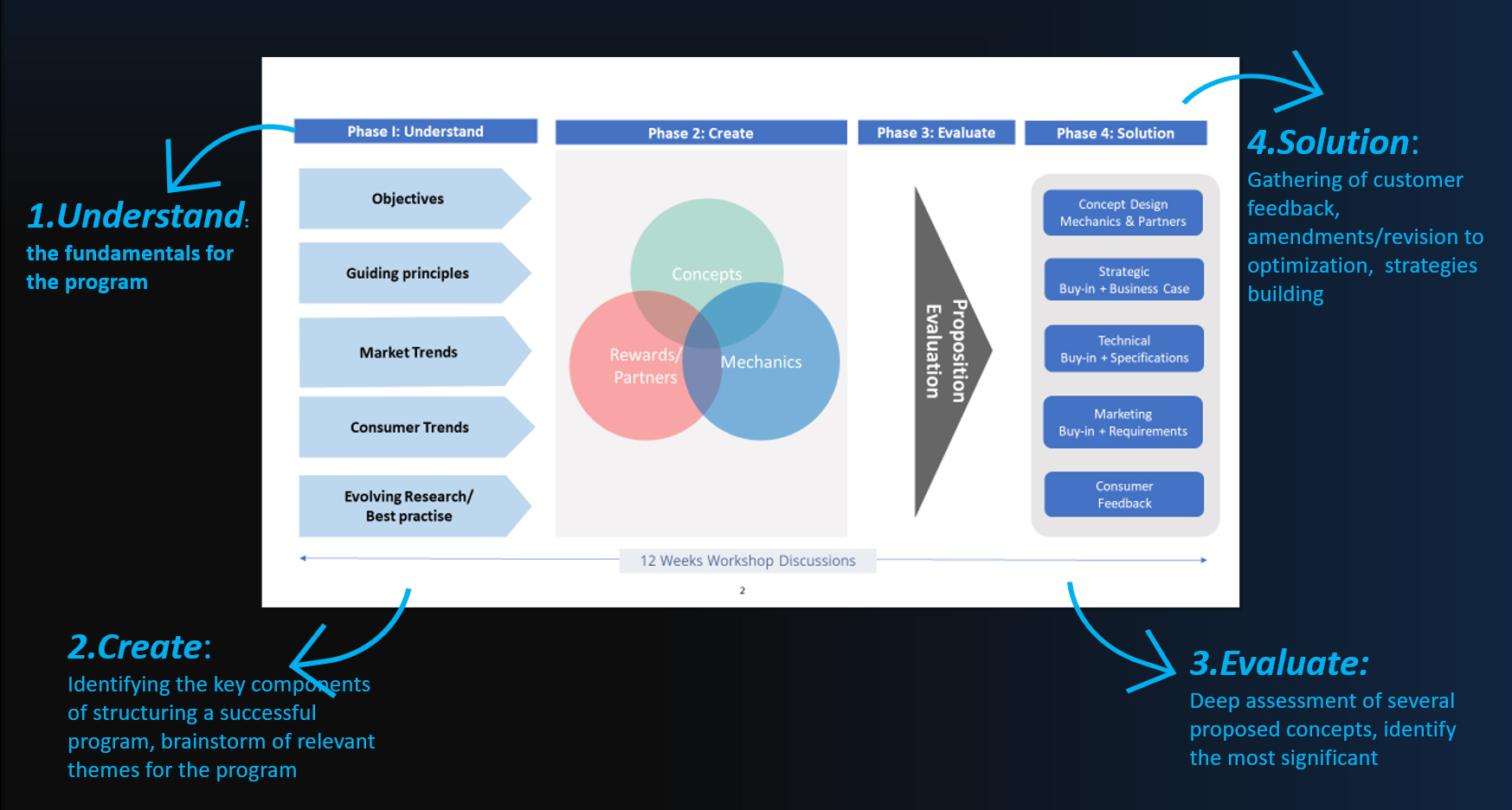
The Ideation Journey begins with understanding the fundamental principles for implementing a new program. This crucial step requires extensive research to gather data on consumer usage, attitudes, and behaviors regarding your business and loyalty offerings. By conducting qualitative and quantitative exploratory research, such as focus group discussions or in-depth interviews, businesses can develop a deep understanding of consumer personas, including their pain points, preferences, and desires. This equips businesses with an explicit knowledge of their customers’ wants and delineates how to meet these needs through a loyalty program.
Following a firm understanding of these fundamentals, the journey proceeds to the program’s Creation. This phase involves brainstorming program themes, identifying key structural components, and integrating these using the Loyalty Framework—a tool designed to shape the loyalty program effectively and ensure all bases are covered.
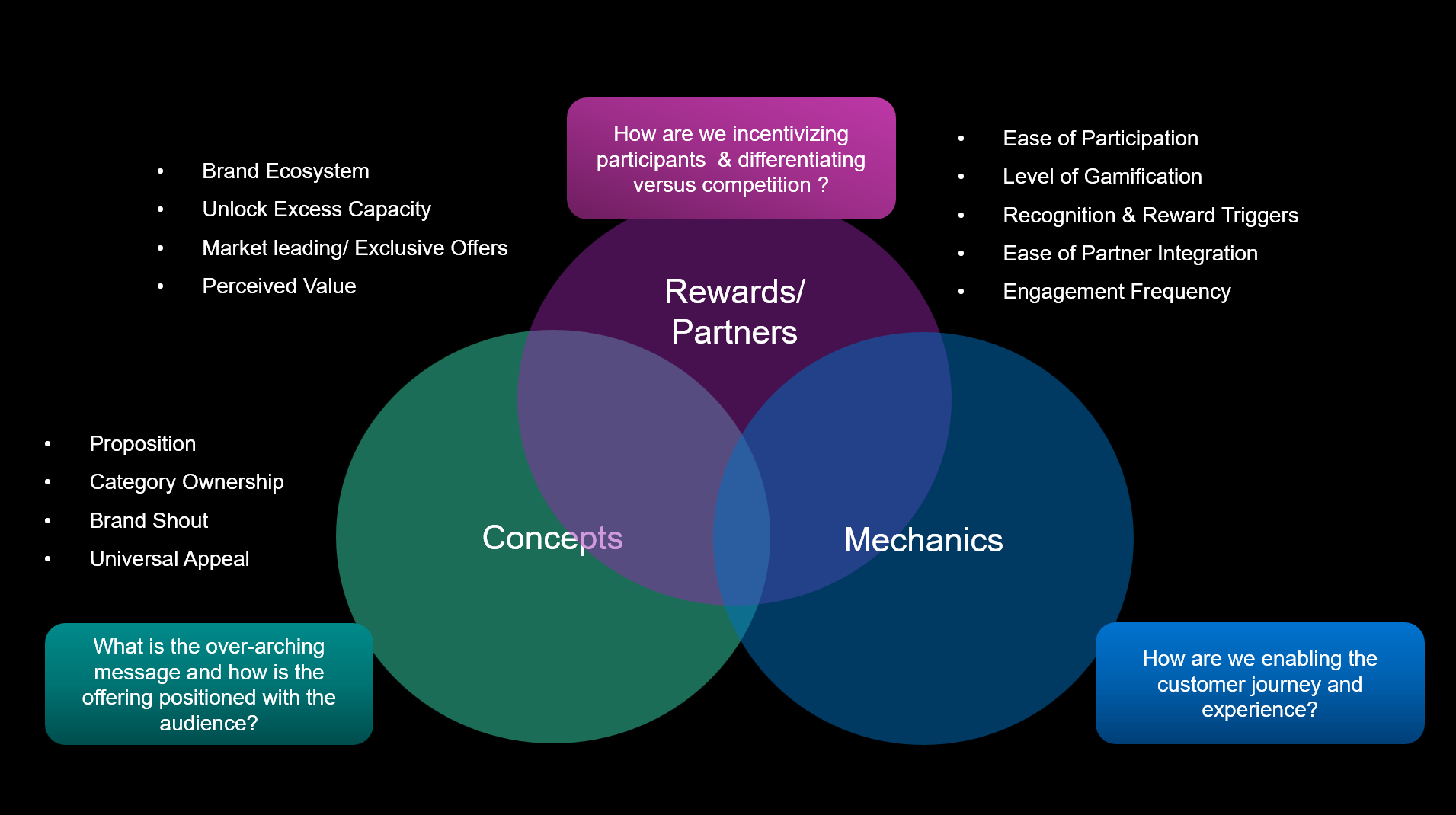
The Loyalty Framework is an integral part of this ideation process, which revolves around three key design pillars: Concepts, Rewards/Partners, and Mechanics. Understanding and integrating these pillars will ensure the loyalty program meets the unique needs of your business.
1. The Concepts pillar outlines the program’s overarching message and how it is presented to the target audience. It includes the proposition and its alignment with the brand and aims to ensure universal appeal across the variety of personas that make up the customer base
2. Rewards are used to incentivize participants effectively. If your business does not have a sufficient array of ‘giftable’ products and services, seeking partnerships and establishing brand ecosystems can be highly effective and lead to delivering market-leading and exclusive offers that provide a higher perceived value. Aspects to consider include:
Brand Ecosystem: This represents the community of partners that provide value to your loyalty program, creating an integrated and mutually beneficial network.
Unlock Excess Capacity: This involves leveraging underutilized resources or assets in your business to provide additional value to your loyalty program participants.
Market Leading/Exclusive Offers: Providing exclusive or industry-leading offers can significantly enhance the perceived value of your program and attract customers.
Perceived Value: The value of the rewards should be clear, attractive, and easily understood by participants.
3. The latest technical advancements enable many Mechanics options; selecting the right combination of mechanics to use is vital to ensure a desire to participate. The mechanics should be designed to have a smooth customer journey, be easy to participate and engage with, have a level of gamification, and use elements of recognition and reward.
By carefully examining these three pillars, businesses can design a loyalty program that aligns seamlessly with customer expectations and business goals.
The third milestone, Evaluation, thoroughly scrutinize the program concepts. In workshops, stakeholders, including customer focus groups, are invited to review, evaluate, and prioritize the program elements. The goal is to refine the options into one promising program concept that aligns closely with the predefined objectives.
The final and transformative stage, the Solution phase, pivots towards delivering the fully developed loyalty program in detail. This stage is a comprehensive reveal, presenting the final concept, detailed mechanics, and the complete end-to-end journey.
This includes unveiling the Final Concept, a comprehensive representation of the loyalty program concept with detailed mechanics principles. It isn’t just a vague outline but a complete concept supported with illustrative animations and complex elements that explain its workings.
Next is the delivery of the Mechanics Elements. These fundamental parts of the concept support the mechanics and cater to the program’s objectives. It’s a detailed breakdown of the elements, explaining how they meet the requirements and contribute to the loyalty program.
Lastly, we present the Complete End-to-End Journey, providing a design from the moment a customer joins to the point of redemption. This encapsulates the entire customer experience, providing a clear view of what customers will experience as they engage with your loyalty program.
This final stage results in a fully conceptualized loyalty program ready to be deployed in the marketplace. This program aligns seamlessly with your business case, anticipating success in fostering customer loyalty and advocacy.
Our case study, “Innovation in Loyalty and Customer Experience at Orange Belgium,” illustrates a real-world application of Loyalty Ideation, showing its potential to reshape how businesses approach customer loyalty. We invite you to download and delve into this case study. By doing so, you’ll discover how this data-driven approach to designing loyalty programs can significantly enhance customer engagement and improve business performance.”
Contact us for more information about our services or to discuss your specific loyalty program needs.
About the Case Study:
Related Readings
Download Case Study
Complete the form…

